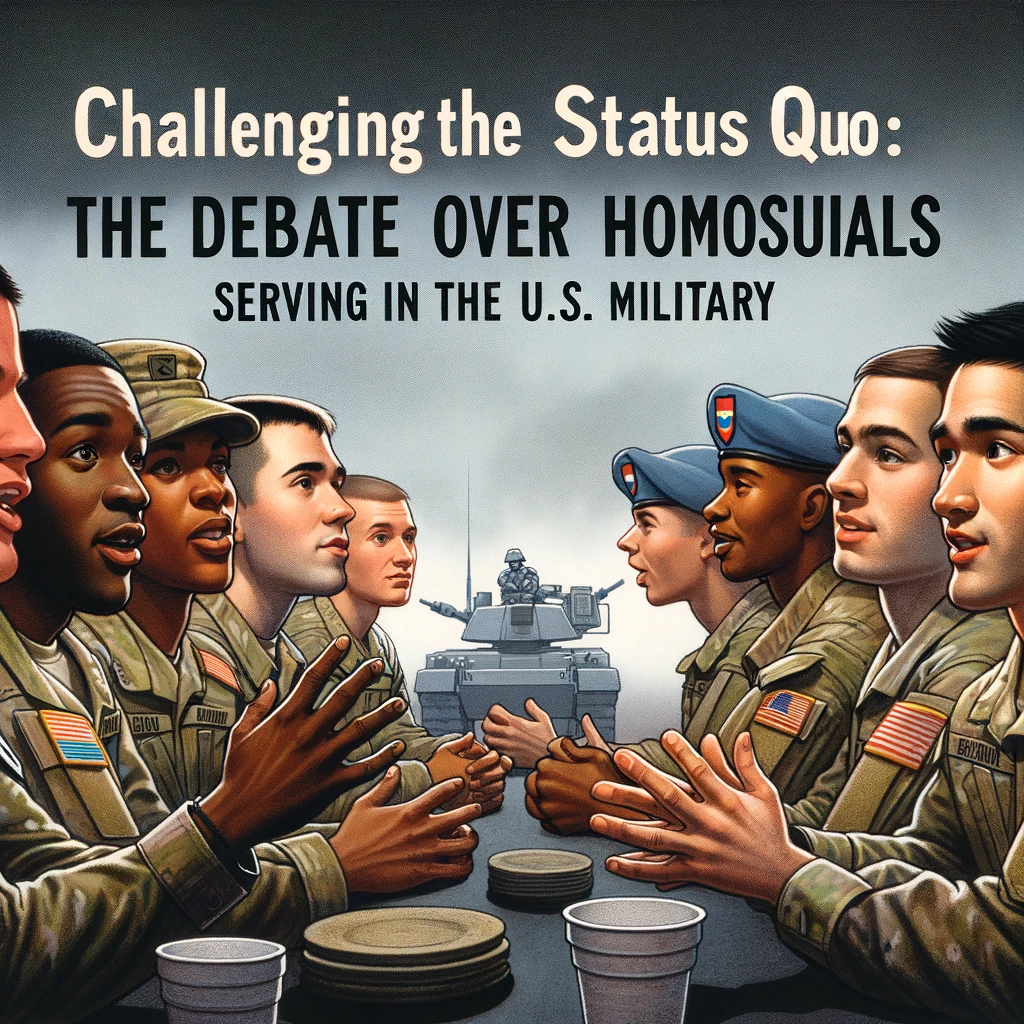
The debate surrounding the inclusion of homosexuals in the U.S. military has been a contentious issue, rooted in a variety of social, moral, and operational concerns that have evolved over decades. Historically, the primary arguments against allowing homosexuals to serve in the military have centered on issues such as unit cohesion, military readiness, and the moral or religious beliefs held by some service members and parts of society.
One of the most frequently cited arguments against homosexuals serving in the military has been the potential impact on unit cohesion. Proponents of this view argued that the presence of openly gay soldiers could undermine the tight, cohesive bond that is considered essential for effective military operations. They contended that personal discomfort and prejudice among troops could lead to divisions within units, which, in turn, might compromise the effectiveness of military operations. This perspective was particularly prevalent during the era leading up to and including the “Don’t Ask, Don’t Tell” (DADT) policy, which was enacted in 1993. Under DADT, service members were prohibited from disclosing their homosexual orientation, a compromise that was intended to maintain unit cohesion while stopping practices that actively sought out and discharged homosexual military personnel.
Closely related to the argument about unit cohesion were concerns about privacy. Critics of allowing homosexuals to serve openly often pointed to the intimate living conditions inherent to military life—such as shared sleeping quarters and communal showers—as areas where tensions could arise. They argued that heterosexual service members might feel uncomfortable and that their privacy would be violated if they had to share such close quarters with gay or lesbian service members. This argument was often framed in terms of the rights and comfort of the heterosexual majority, positing that their readiness and morale should not be compromised by accommodating minority sexual orientations.
Another significant concern was the impact on military readiness. Opponents suggested that integrating openly gay service members could introduce distractions and lead to disciplinary problems, thus diverting attention from the primary missions of the military. They argued that anything that could potentially detract from a unit’s focus and operational capabilities should be avoided. This viewpoint often intersected with broader debates about social experimentation within the ranks of the military, with some critics contending that the military should not be used as a ground for societal changes at the expense of combat readiness.
Moral and religious objections also played a large role in the arguments against homosexual service members. Some opponents believed that homosexuality was incompatible with the military’s values and the moral fabric of society. These views were often rooted in conservative religious beliefs that view homosexual acts as sinful or morally wrong. Within this framework, allowing homosexuals to serve openly was seen as an endorsement of a lifestyle that they believed contravened the moral principles of many service members and civilians.
These arguments have been challenged and have evolved over time as societal attitudes toward homosexuality have changed. Studies and practical experiences, particularly those from countries that have allowed homosexuals to serve openly without significant issues, have often contradicted the dire predictions about unit cohesion and military effectiveness. For example, research conducted post-repeal of DADT has shown that lifting the ban on openly gay service did not harm the overall military effectiveness, unit cohesion, or morale. Instead, it helped in fostering an environment of equality and respect, aligning the military’s values more closely with those of a changing American society.
Furthermore, the arguments against have been met with strong advocacy from human rights groups and LGBTQ+ organizations, pushing for equality and non-discrimination. The repeal of DADT in 2011 marked a significant turning point, reflecting a growing recognition that sexual orientation does not determine an individual’s ability to serve effectively in the military. Since then, the focus has increasingly been on ensuring that all service members, regardless of their sexual orientation, are treated with respect and dignity.
In conclusion, while the debate over homosexuals serving in the military has been marked by deeply held beliefs and concerns about the potential impacts on military operations and morale, the trajectory of recent years suggests a move towards greater inclusivity. This shift reflects broader social changes and a reevaluation of what it means to be capable of military service. As society continues to evolve, so too does its understanding of equality and the true foundations of military cohesion and readiness.
Illustration depicting a diverse group of military personnel engaged in a discussion, symbolizing the debate over homosexuals serving in the U.S. military. The setting emphasizes the military environment, highlighting the significance of the topic.